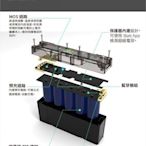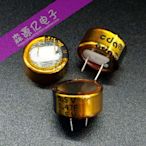超級電容 相關
廣告電解電容器, 積層陶瓷、鉭電、安規電容、特殊電容、SMD貼片電容、整流發光二極體、突波器...
美國技術,軍工品質 服務器閃存保護,汽車啟動,風力發電等. 專業超級電容與模組...
搜尋結果
 $99999現貨MDNTOISH大容量~超級電容專業安裝重低音/擴大機必備超級1法拉超大容量Y6113293093
$99999現貨MDNTOISH大容量~超級電容專業安裝重低音/擴大機必備超級1法拉超大容量Y6113293093 $4250超級電容,DDL,5.5V,1F,SIZE:9X17.5X19.5(50個=NT 4250元)SAMXON,法拉電容電容小站(全館現貨-面交=自取
$4250超級電容,DDL,5.5V,1F,SIZE:9X17.5X19.5(50個=NT 4250元)SAMXON,法拉電容電容小站(全館現貨-面交=自取 $19900☆屏東-晟信二輪☆ 台灣精品 RCE 二代汽車超級電容晟信二輪 輪胎/精品專賣店
$19900☆屏東-晟信二輪☆ 台灣精品 RCE 二代汽車超級電容晟信二輪 輪胎/精品專賣店 $30超級電容 法拉電容 5.5V 0.47F C型 新原裝 474C 替代高奇普/松下 w68 yahoo fBUY360-IC 電子零件
$30超級電容 法拉電容 5.5V 0.47F C型 新原裝 474C 替代高奇普/松下 w68 yahoo fBUY360-IC 電子零件![超級電容 超大容量 汽車電子整流器 2.8V3000F 螺絲孔電容 2.7V~易德好物 超級電容 超大容量 汽車電子整流器 2.8V3000F 螺絲孔電容 2.7V~易德好物]() $3568超級電容 超大容量 汽車電子整流器 2.8V3000F 螺絲孔電容 2.7V~易德好物易德好物
$3568超級電容 超大容量 汽車電子整流器 2.8V3000F 螺絲孔電容 2.7V~易德好物易德好物![凱美5.5V1.0F 5.5V1F超級電容 SE-5R5-D105VYV 法拉電容 w86 056 [8004205] 凱美5.5V1.0F 5.5V1F超級電容 SE-5R5-D105VYV 法拉電容 w86 056 [8004205]]() $20凱美5.5V1.0F 5.5V1F超級電容 SE-5R5-D105VYV 法拉電容 w86 056 [8004205]。BUY360。電子零件
$20凱美5.5V1.0F 5.5V1F超級電容 SE-5R5-D105VYV 法拉電容 w86 056 [8004205]。BUY360。電子零件![2022 RCE 二代 超級電容 【安裝破百台】Luxgen Honda Golf SUBARU 速霸路 電池 電瓶 2022 RCE 二代 超級電容 【安裝破百台】Luxgen Honda Golf SUBARU 速霸路 電池 電瓶]() $199002022 RCE 二代 超級電容 【安裝破百台】Luxgen Honda Golf SUBARU 速霸路 電池 電瓶車無限 精品工坊
$199002022 RCE 二代 超級電容 【安裝破百台】Luxgen Honda Golf SUBARU 速霸路 電池 電瓶車無限 精品工坊![全新原裝 5.5V4F 法拉電容 雙層電容 5.5V4.0F超級電容 H型 扣式 W68 [1-70101] z99 全新原裝 5.5V4F 法拉電容 雙層電容 5.5V4.0F超級電容 H型 扣式 W68 [1-70101] z99]() $40全新原裝 5.5V4F 法拉電容 雙層電容 5.5V4.0F超級電容 H型 扣式 W68 [1-70101] z99。BUY360。電子零件
$40全新原裝 5.5V4F 法拉電容 雙層電容 5.5V4.0F超級電容 H型 扣式 W68 [1-70101] z99。BUY360。電子零件![YEC 2.7V30F法拉電容 圓柱形超級電容30F2.7V 16*32 w68 056 [4535712] YEC 2.7V30F法拉電容 圓柱形超級電容30F2.7V 16*32 w68 056 [4535712]]() $70YEC 2.7V30F法拉電容 圓柱形超級電容30F2.7V 16*32 w68 056 [4535712]BUY360-IC 電子零件
$70YEC 2.7V30F法拉電容 圓柱形超級電容30F2.7V 16*32 w68 056 [4535712]BUY360-IC 電子零件![EZB POWER 超級電容汽柴油側裝版 輔助電瓶 電池 EZB POWER 超級電容汽柴油側裝版 輔助電瓶 電池]() $6900EZB POWER 超級電容汽柴油側裝版 輔助電瓶 電池汽車百貨店
$6900EZB POWER 超級電容汽柴油側裝版 輔助電瓶 電池汽車百貨店![超級電容 法拉電容 比逆電流有效 超級電容 法拉電容 比逆電流有效]() $1400超級電容 法拉電容 比逆電流有效Y4517717933
$1400超級電容 法拉電容 比逆電流有效Y4517717933![法拉電容 3.3V0.22F 0.22F 3.3V 超級電容 DMS3R3224R W81-0513 [338492] 法拉電容 3.3V0.22F 0.22F 3.3V 超級電容 DMS3R3224R W81-0513 [338492]]() $10法拉電容 3.3V0.22F 0.22F 3.3V 超級電容 DMS3R3224R W81-0513 [338492]。BUY360。電子零件
$10法拉電容 3.3V0.22F 0.22F 3.3V 超級電容 DMS3R3224R W81-0513 [338492]。BUY360。電子零件
A supercapacitor ( SC ), also called an ultracapacitor, is a high-capacity capacitor, with a capacitance value much higher than solid-state capacitors but with lower voltage limits. It bridges the gap between electrolytic capacitors and rechargeable batteries.
Capacitance is the capability of a material object or device to store electric charge. It is measured by the charge in response to a difference in electric potential, expressed as the ratio of those quantities. Commonly recognized are two closely related notions of capacitance: self capacitance and mutual capacitance.
- F = A² s⁴ kg−1 m−2
- farad
- μF, nF, pF
- General Information
- Types and Features of Electrolytic Capacitors
- History
- Electrical Characteristics
- Operational Characteristics
- Additional Information
- See Also
- Further Reading
Electrolytic capacitors family tree
As to the basic construction principles of electrolytic capacitors, there are three different types: aluminum, tantalum, and niobium capacitors. Each of these three capacitor families uses non-solid and solid manganese dioxide or solid polymer electrolytes, so a great spread of different combinations of anode material and solid or non-solid electrolytes is available.
Charge principle
Like other conventional capacitors, electrolytic capacitors store the electric energy statically by charge separation in an electric field in the dielectric oxide layer between two electrodes. The non-solid or solid electrolyte in principle is the cathode, which thus forms the second electrode of the capacitor. This and the storage principle distinguish them from electrochemical capacitors or supercapacitors, in which the electrolyte generally is the ionic conductive connection between two el...
Basic materials and construction
Electrolytic capacitors use a chemical feature of some special metals, previously called "valve metals", which on contact with a particular electrolyte form a very thin insulating oxide layer on their surface by anodic oxidationwhich can function as a dielectric. There are three different anode metals in use for electrolytic capacitors: 1. Aluminum electrolytic capacitors use a high-purity etched aluminium foil with aluminium oxideas dielectric 2. Tantalum electrolytic capacitors use a sinter...
Comparison of electrolytic capacitor types
Combinations of anode materials for electrolytic capacitors and the electrolytes used have given rise to wide varieties of capacitor types with different properties. An outline of the main characteristics of the different types is shown in the table below. The non-solid or so-called "wet" aluminum electrolytic capacitors were and are the cheapest among all other conventional capacitors. They not only provide the cheapest solutions for high capacitance or voltage values for decoupling and buff...
Comparison of electrical parameters
In order to compare the different characteristics of the different electrolytic capacitor types, capacitors with the same dimensions and of similar capacitance and voltage are compared in the following table. In such a comparison the values for ESR and ripple current load are the most important parameters for the use of electrolytic capacitors in modern electronic equipment. The lower the ESR, the higher the ripple current per volume and better functionality of the capacitor in the circuit. H...
Styles of aluminium and tantalum electrolytic capacitors
Aluminium electrolytic capacitors form the bulk of the electrolytic capacitors used in electronics because of the large diversity of sizes and the inexpensive production. Tantalum electrolytic capacitors, usually used in the SMD version, have a higher specific capacitance than the aluminum electrolytic capacitors and are used in devices with limited space or flat design such as laptops. They are also used in military technology, mostly in axial style, hermetically sealed. Niobium electrolytic...
Origin
The phenomenon that in an electrochemical process, aluminum and such metals as tantalum, niobium, manganese, titanium, zinc, cadmium, etc., can form an oxide layer which blocks an electric current from flowing in one direction but which allows current to flow in the opposite direction, was first observed in 1857 by the German physicist and chemist Johann Heinrich Buff (1805–1878). It was first put to use in 1875 by the French researcher and founder Eugène Ducretet,who coined the term "valve m...
"Wet" aluminum capacitor
The first industrially realized electrolytic capacitors consisted of a metallic box used as the cathode. It was filled with a boraxelectrolyte dissolved in water, in which a folded aluminum anode plate was inserted. Applying a DC voltage from outside, an oxide layer was formed on the surface of the anode. The advantage of these capacitors was that they were significantly smaller and cheaper than all other capacitors at this time relative to the realized capacitance value. This construction wi...
"Dry" aluminum capacitor
The ancestor of the modern electrolytic capacitor was patented by Samuel Ruben in 1925, who teamed with Philip Mallory, the founder of the battery company that is now known as Duracell International. Ruben's idea adopted the stacked construction of a silver mica capacitor. He introduced a separated second foil to contact the electrolyte adjacent to the anode foil instead of using the electrolyte-filled container as the capacitor's cathode. The stacked second foil got its own terminal addition...
Series-equivalent circuit
The electrical characteristics of capacitors are harmonized by the international generic specification IEC 60384-1. In this standard, the electrical characteristics of capacitors are described by an idealized series-equivalent circuit with electrical components which model all ohmic losses, capacitive and inductive parameters of an electrolytic capacitor: 1. C, the capacitance of the capacitor 2. RESR, the equivalent series resistancewhich summarizes all ohmic losses of the capacitor, usually...
Capacitance, standard values and tolerances
The electrical characteristics of electrolytic capacitors depend on the structure of the anode and the electrolyte used. This influences the capacitance value of electrolytic capacitors, which depends on measuring frequency and temperature. Electrolytic capacitors with non-solid electrolytes show a broader aberration over frequency and temperature ranges than do capacitors with solid electrolytes. The basic unit of an electrolytic capacitor's capacitance is the microfarad (μF). The capacitanc...
Rated and category voltage
Referring to the IEC/EN 60384-1 standard, the allowed operating voltage for electrolytic capacitors is called the "rated voltage UR" or "nominal voltage UN". The rated voltage UR is the maximum DC voltage or peak pulse voltage that may be applied continuously at any temperature within the rated temperature range TR. The voltage proof of electrolytic capacitors decreases with increasing temperature. For some applications it is important to use a higher temperature range. Lowering the voltage a...
Reliability
The reliability of a component is a property that indicates how reliably this component performs its function in a time interval. It is subject to a stochastic process and can be described qualitatively and quantitatively; it is not directly measurable. The reliability of electrolytic capacitors is empirically determined by identifying the failure rate in production accompanying endurance tests, see Reliability engineering. Reliability normally is shown as a bathtub curveand is divided into t...
Lifetime
The lifetime, service life, load life or useful life of electrolytic capacitors is a special characteristic of non-solid aluminum electrolytic capacitors, whose liquid electrolyte can evaporate over time. Lowering the electrolyte level affects the electrical parameters of the capacitors. The capacitance decreases and the impedance and ESR increase with decreasing amounts of electrolyte. This very slow electrolyte drying-out depends on the temperature, the applied ripple current load, and the...
Failure modes, self-healing mechanism and application rules
The many different types of electrolytic capacitors exhibit different electrical long-term behavior, intrinsic failure modes, and self-healing mechanisms. Application rules for types with an intrinsic failure mode are specified to ensure capacitors with high reliability and long life.
Capacitor symbols
Electrolytic capacitor symbols 1. Electrolytic capacitor 2. Electrolytic capacitor 3. Electrolytic capacitor 4. Bipolar electrolytic capacitor
Parallel connection
If an individual capacitor within a bank of parallel capacitors develops a short, the entire energy of the capacitor bank discharges through that short. Thus, large capacitors, particularly high voltage types, should be individually protected against sudden discharge.
Series connection
In applications where high withstanding voltages are needed, electrolytic capacitors can be connected in series. Because of individual variation in insulation resistance, and thus the leakage current when voltage is applied, the voltage is not distributed evenly across each series capacitor. This can result in the voltage rating of an individual capacitor being exceeded. A passive or active balancer circuit must be provided in order to equalize the voltage across each individual capacitor.
The Electrolytic Capacitor; 1st Ed; Alexander Georgiev; Murray Hill Books; 191 pages; 1945. (archive)
In electrical engineering, a capacitor is a device that stores electrical energy by accumulating electric charges on two closely spaced surfaces that are insulated from each other. The capacitor was originally known as the condenser, [1] a term still encountered in a few compound names, such as the condenser microphone.
The Boeing F/A-18E and F/A-18F Super Hornet are a series of American supersonic twin-engine, carrier-capable, multirole fighter aircraft derived from the McDonnell Douglas F/A-18 Hornet, in service with the armed forces of the U.S., Australia, and Kuwait.
Super Buddies is a 2013 American superhero comedy film. It is the seventh and final installment in the Air Buddies film series, and the fourteenth and final film of the overall Air Bud franchise. It was released on August 27, 2013. Plot. The Buddies find five magical rings from the planet Inspiron. Each one gives them unique superpowers.
The Super Bowl is the annual American football game that determines the champion of the National Football League (NFL). The game culminates a season that begins in the previous calendar year, and is the conclusion of the NFL playoffs. The winner receives the Vince Lombardi Trophy.





![凱美5.5V1.0F 5.5V1F超級電容 SE-5R5-D105VYV 法拉電容 w86 056 [8004205] 凱美5.5V1.0F 5.5V1F超級電容 SE-5R5-D105VYV 法拉電容 w86 056 [8004205]](https://s.yimg.com/fz/api/res/1.2/psZqDLaSW4KPCp0aRd7Ipg--~C/YXBwaWQ9c3JjaGRkO2ZpPWZpbGw7aD0xNDY7cT04MDt3PTE0Ng--/https://ct.yimg.com/xd/api/res/1.2/tmn4I0QDQBSoJOKgwHVQ5A--/YXBwaWQ9eXR3YXVjdGlvbnNlcnZpY2U7aD00MDA7cT04NTtyb3RhdGU9YXV0bzt3PTQwMA--/https://s.yimg.com/ob/image/4ec9ad34-95ae-4b34-8ea2-e78fcd8a7d7f.jpg)

![全新原裝 5.5V4F 法拉電容 雙層電容 5.5V4.0F超級電容 H型 扣式 W68 [1-70101] z99 全新原裝 5.5V4F 法拉電容 雙層電容 5.5V4.0F超級電容 H型 扣式 W68 [1-70101] z99](https://s.yimg.com/fz/api/res/1.2/EDvEdycJ9aOXPLD2gUMsdQ--~C/YXBwaWQ9c3JjaGRkO2ZpPWZpbGw7aD0xNDY7cT04MDt3PTE0Ng--/https://ct.yimg.com/xd/api/res/1.2/VAQn3N8UUwDA548QDDhGhg--/YXBwaWQ9eXR3YXVjdGlvbnNlcnZpY2U7aD00MDA7cT04NTtyb3RhdGU9YXV0bzt3PTQwMA--/https://s.yimg.com/ob/image/4ec2106a-30ac-48bc-ba90-1e7483a532cc.jpg)
![YEC 2.7V30F法拉電容 圓柱形超級電容30F2.7V 16*32 w68 056 [4535712] YEC 2.7V30F法拉電容 圓柱形超級電容30F2.7V 16*32 w68 056 [4535712]](https://s.yimg.com/fz/api/res/1.2/yMDA5JkrcF.NsizMFT6x4Q--~C/YXBwaWQ9c3JjaGRkO2ZpPWZpbGw7aD0xNDY7cT04MDt3PTE0Ng--/https://ct.yimg.com/xd/api/res/1.2/Rpes8kB1Zl0VEKRfTQOGNw--/YXBwaWQ9eXR3YXVjdGlvbnNlcnZpY2U7aD00MDA7cT04NTtyb3RhdGU9YXV0bzt3PTQwMA--/https://s.yimg.com/ob/image/3e1696d5-b465-4c6e-b0fb-ce26fb56dde6.jpg)


![法拉電容 3.3V0.22F 0.22F 3.3V 超級電容 DMS3R3224R W81-0513 [338492] 法拉電容 3.3V0.22F 0.22F 3.3V 超級電容 DMS3R3224R W81-0513 [338492]](https://s.yimg.com/fz/api/res/1.2/BdYHpqr9StVMAUZKHQyewg--~C/YXBwaWQ9c3JjaGRkO2ZpPWZpbGw7aD0xNDY7cT04MDt3PTE0Ng--/https://ct.yimg.com/xd/api/res/1.2/4SS90i0xbCD9UlE5bbCbmA--/YXBwaWQ9eXR3YXVjdGlvbnNlcnZpY2U7aD0zMzk7cT04NTtyb3RhdGU9YXV0bzt3PTQwMA--/https://s.yimg.com/ob/image/4c2cbc0a-371d-4698-8774-0d205181a42f.jpg)
